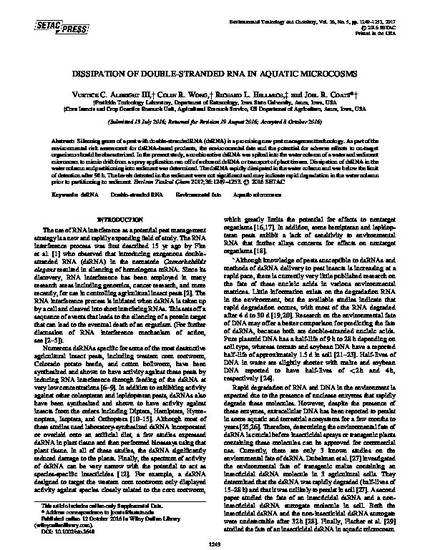
Silencing genes of a pest with double‐stranded RNA (dsRNA) is a promising new pest management technology. As part of the environmental risk assessment for dsRNA‐based products, the environmental fate and the potential for adverse effects to on‐target organisms should be characterized. In the present study, a nonbioactive dsRNA was spiked into the water column of a water and sediment microcosm to mimic drift from a spray application run off of unbound dsRNA or transport of plant tissues. Dissipation of dsRNA in the water column and partitioning into sediment was determined. The dsRNA rapidly dissipated in the water column and was below the limit of detection after 96 h. The levels detected in the sediment were not significant and may indicate rapid degradation in the water column prior to partitioning to sediment.
Available at: http://works.bepress.com/richard_hellmich/149/

This article is published as Albright, Vurtice C., Colin R. Wong, Richard L. Hellmich, and Joel R. Coats. "Dissipation of double‐stranded RNA in aquatic microcosms." Environmental toxicology and chemistry 36, no. 5 (2017): 1249-1253. doi: 10.1002/etc.3648.